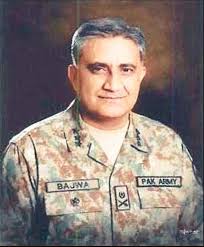Daesh’s Pakistan chapter top brass eliminated

Islamabad
Within a short span of three months since its launch in January 2015, three top leaders of the Pakistan chapter of the Islamic State (IS) or Daesh, including its ameer Hafiz Saeed Khan, deputy ameer Mullah Abdul Rauf Khadim, and his successor Hafiz Wahidi, have been killed on both sides of the Pak-Afghan border, mostly in the US drone attacks.
The Pakistan chapter of Daesh was launched after 100-plus Taliban leaders and fighters from Pakistan and Afghanistan had released a video in the second week of January 2015 in which they pledged allegiance to Abu Bakar Al Baghdadi, the self-appointed caliph of the Muslims. The pledge of allegiance was part of a push by the Islamic State to expand its profile beyond Iraq and Syria, which caused a major blow to the Tehrik-e-Taliban Pakistan (TTP) whose top ten leaders had decided to join hands with Daesh. The Pakistan chapter of Daesh was named after the Khurasan, which is the ancient name of the vast region comprising parts of Pakistan, Afghanistan, Iran and some of the Central Asian States. A former TTP commander Saeed Khan, who belonged to Mamozai area of the Orakzai Agency in FATA, was appointed the new ameer of Khurasan. Before discarding the TTP umbrella in mid-October 2014, Saeed Khan was the ameer of the Orakzai Agency chapter of the Taliban.
Hafiz Saeed Khan’s departure from the TTP along with the Taliban spokesman Shahidullah Shahid and eight other regional commanders of Fata was the biggest loss to the jehadi conglomerate led by Mullah Fazlullah because of Saeed’s mass following and influence in the TTP ranks. In yet another major development on April 1, 2015 the Pakistan-based Uzbek militant group – the Islamic Movement of Uzbekistan (IMU) – declared allegiance to the Islamic State, saying that it has not heard from the fugitive Afghan Taliban ameer Mullah Omar for 13 years and he can no longer be the leader in accordance with Islamic Shariah. The IMU was loyal to the so-called ‘Ameerul Momineen (leader of the faithful)’ Mullah Omar until now.
However, in a major setback for the Islamic State in the region, Saeed Khan was killed with two other comrades in a bomb explosion in the Toor Dara area of Tirah Valley on April 15, 2015 while manufacturing an improvised explosive device (IED) which went off, killing the three men on the spot. Saeed Khan was known in the militant circles of the tribal areas as one of the most hard line and dangerous commanders who had organised dozens of deadly terrorist attacks on key installations across Pakistan, including the March 2013 attack on the US Consulate in Peshawar which killed 12 people, the December 2012 fidayeen attack at the Peshawar airport which killed nine people, military checkpoints, mourning processions of the minority Shia community and worship places of the Christians and Ahmadis.
The Islamic State has not yet announced the successor of Saeed Khan, although it is largely believed that the former TTP spokesman Shahidullah Shahid is the acting ameer of the Khurasan chapter of Daesh. The appointment of the new Daesh ameer for the Khurasan chapter is expected to take some time because Abu Bakar al-Baghdadi has been seriously injured in a raid by the US aircrafts in the al-Baaj district province of Nineveh, near the Syrian border. Although his wounds were originally life threatening, Baghdadi is reportedly making a fast recovery now. But the dilemma for the Pakistan chapter of Daesh is that Saeed Khan was not the only IS leader to have been killed. Before him, the Afghan National Army had killed 10 insurgents during an operation in the Helmand province of Afghanistan on March 15, 2015 including Hafiz Wahidi, the deputy ameer of the Khurasan who had replaced Mullah Abdul Rauf Khadim after his killing in a US drone hit in Afghanistan on February 9, 2015.
Hafiz Wahidi was the nephew of Mullah Abdul Rauf Khadim, who was previously a senior leader of Taliban and a former detainee at the Gunatanamo Bay. The Islamic State has already avenged the March 15, 2015 killing of Hafiz Wahidi by carrying out a series of bomb attacks including a suicide attack in Jalalabad city, killing 35 people [on March 18, 2015]. The leadership of the Khurasan chapter of Daesh has been eliminated at a crucial time when the ongoing battle for influence between Abu Bakar Baghdadi-led IS and Dr Ayman Zawahiri-led al-Qaeda was intensifying in Pakistan. This tug of war actually began when Baghdadi appointed himself as the Caliph of the Islamic State in June 2014, a few months after he was expelled by Zawahiri as the chief of the Iraqi chapter of al-Qaeda for disobeying him and not stopping the slaughter of the innocent civilians in his ongoing ‘crusade’.
Abu Bakar Baghdadi had further insisted that pledging allegiance to his caliphate was a religious obligation on all the Muslims across the globe. His announcement had created ripples in the Pakistani and Afghan Taliban circles, which viewed it as an attempt to clinch the position of the Ameerul Momineen from Mullah Mohammad Omar, the fugitive ameer of Afghan Taliban. Zawahiri subsequently threw his weight behind Mullah Mohammad Omar. In a bid to counter Baghdadi’s move to declare himself the caliph, al-Qaeda leadership deemed it fit to renew its oath of allegiance to Mullah Omar and recognize him as their ameer, while reminding that the late Osama bin Laden too had pledged allegiance to Mullah Omar.
In a related move on the eve of the 13th anniversary of the 9/11 terror attacks, Zawahiri announced to set up the South Asia chapter of al-Qaeda led by a Pakistani commander, Asim Umar. Making the announcement on September 4, 2014 in a video, Zawahiri said the formation of the South Asia branch of al-Qaeda would spread Islamic rule and raise the flag of jehad across the subcontinent. Umar, who was shown in a Zawahiri’s video, was tasked with rousing fighters in South Asia. The selection of Asim Umar as head of the South Asia branch of al-Qaeda, which was an attempt to counter the rise of Daesh in this region, also indicated the increasing ‘Pakistanisation of al-Qaeda’, given the fact that Asim Umar had been a part of the Punjabi Taliban [led by Asmatullah Muavia] for several years before linking up with al-Qaeda.
Asim’s selection demonstrated the regional flavor and the influence that Pakistani jehadis wield in the new al-Qaeda branch. Soon afterwards, al-Qaeda in Indian Subcontinent (AQIS) claimed responsibility for a botched attempt to hijack a Navy ship at Karachi Dockyard on September 6, 2014. The establishment of al-Qaeda’s Indian subcontinent branch under the command of a Pakistani jehadi highlighted the close ties between al-Qaeda and the Taliban groups in Afghanistan and Pakistan. The al-Qaeda move came shortly after distribution of Daesh propaganda booklets in parts of the Pak-Afghan tribal belt and in some Afghan refugee camps in Peshawar. Therefore, the launching of the subcontinent chapter of al-Qaeda made it very clear that al-Qaeda and Daesh were competing with each other to clinch the support of Islamic militants in South Asia. In a latest tit-for-tat move in January 2015, Daesh formally announced its Khurasan chapter led by a former TTP commander, Hafiz Saeed Khan, which now faces a serious crisis.
http://www.thenews.com.pk/Todays-News-6-314482-Daeshs-Pakistan-chapter-top-brass-eliminated




